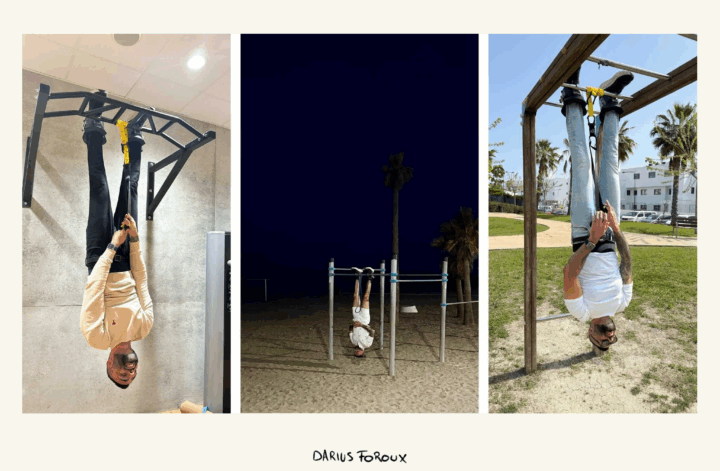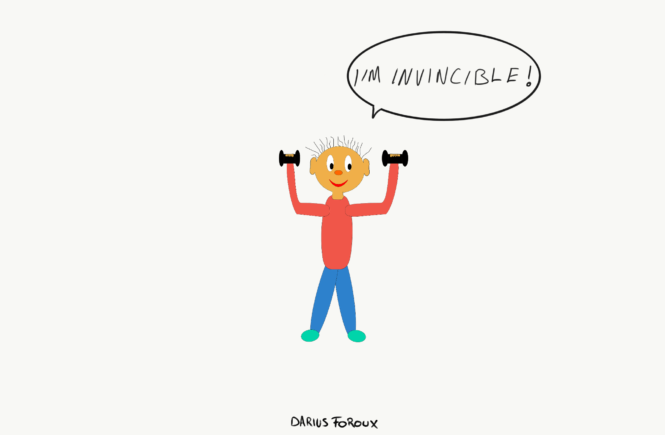I’ve dealt with back pain since I was 15 years old. A basketball injury left me with chronic lower back issues, and for years I cycled through chiropractors, stretching routines, and physical therapy without lasting relief.
In 2020, I wrote an article talking about how daily stretching and flexibility helped me feel “99% pain-free.” It was true at the time, but it didn’t last.
Fast forward to 2023. My back pain resurfaced after a hectic travel schedule and renovating my apartment. All the stretching that previously helped suddenly did nothing. This time was different. The pain was intense, constant, and mentally draining.
When you’re in chronic pain, every other good thing in your life fades. It doesn’t matter how much money, success, or happiness you have; pain overshadows it all.
Discovering a New Approach
Things changed when I came across the work of Dr. Stuart McGill. McGill’s research emphasizes that core strength and stability—not flexibility alone—is crucial for a healthy, pain-free back. He introduced the “McGill Big Three” exercises:
- Modified Curl-Up: Strengthens the front core without putting pressure on the spine.
- Side Plank: Stabilizes the lateral muscles and hips.
- Bird-Dog: Enhances stability and coordination across the spine, shoulders, and hips.
These exercises aren’t about having visible abs; they’re about building endurance in your core muscles. McGill notes that having core stability is far more critical in preventing pain flare-ups than merely stretching or having raw abdominal strength.
The Real Game-Changer
But the biggest breakthrough happened by chance. A friend, Dave Radparvar (founder of reflection.app, where I’m an investor), mentioned using anti-gravity boots to hang upside down, completely relieving his back pain.
While the image of hanging upside-down seemed absurd, it reminded me of another friend who swore by an inversion table.
I thought, why not? I ordered an inversion table from Amazon (I wanted to buy a Teeter one but I couldn’t find it in The Netherlands, so I bought a Toorx).
Ironically, the day it arrived, I was crippled with another back pain episode. My father and brother assembled it for me, and I reluctantly climbed on, tilted back, and within one minute—unbelievably—the pain melted away. My posture improved immediately, and the intense pressure disappeared.
I stepped off the table after two short sessions, walked around, and realized, “I don’t have back pain.” I was skeptical, but the relief lasted. Now, almost a year later, my back pain has never returned for longer than a single day.
Strength Over Stretching
The inversion table was the instant relief, but maintaining a pain-free back required a daily routine. McGill’s approach influenced my entire philosophy: build strength first, and stretch sparingly.
Here’s exactly what I’ve been doing, every day:
- McGill Big Three: A quick 8-minute routine of modified curl-ups, side planks, and bird-dog exercises.
- Compound Strength Training: Just 20 minutes daily of basic movements like squats, hip hinges, pull ups, push ups, and resistance band exercises.
- Inversion Cool-Down: Two sets of two-minute inversion sessions to decompress my spine.
- Minimal Stretching: Just twice a week for short sessions to maintain flexibility without overstretching, primarily hip-flexor and chest stretches.
Staying Pain-Free on the Road
Since I travel often, bringing an inversion table isn’t practical. Instead, I got myself anti-gravity boots. They’re small, easy to carry, and clip onto pull-up bars anywhere. But here’s the catch—they require upper-body and core strength to use safely.
The boots took some getting used to. At first, it was intimidating to hang completely upside-down, especially in hotel gyms or parks. Now, it’s second nature. I pair it with a TRX or elastic bands to pull myself up safely and keep my core engaged. It’s like a mini-workout every time I invert.
After flights or long drives, a quick two-minute inversion session makes an enormous difference. According to McGill, brief inversions counteract the disc pressure from prolonged sitting, significantly reducing pain risk.
A Few Words of Caution
Inversion therapy isn’t a magic cure. Think of it as part of a bigger picture—relief and decompression that allows you to build strength safely. If inversion causes dizziness or head pressure, stop immediately. Also, anyone with hypertension, heart conditions, or glaucoma should consult a doctor first.
Life Without Pain
With pain, even the best life loses color. But when you eliminate chronic pain, life returns in full. For me, discovering inversion therapy and prioritizing core strength over flexibility changed everything. Now, I live pain-free, able to travel, train, and enjoy life fully.
Remember, curing back pain isn’t about finding one miracle exercise or therapy. It’s about building a consistent routine that stabilizes your spine and strengthens your core.
Eliminating symptoms and building resilience are two very different missions. If you embrace both, your body will thank you.




